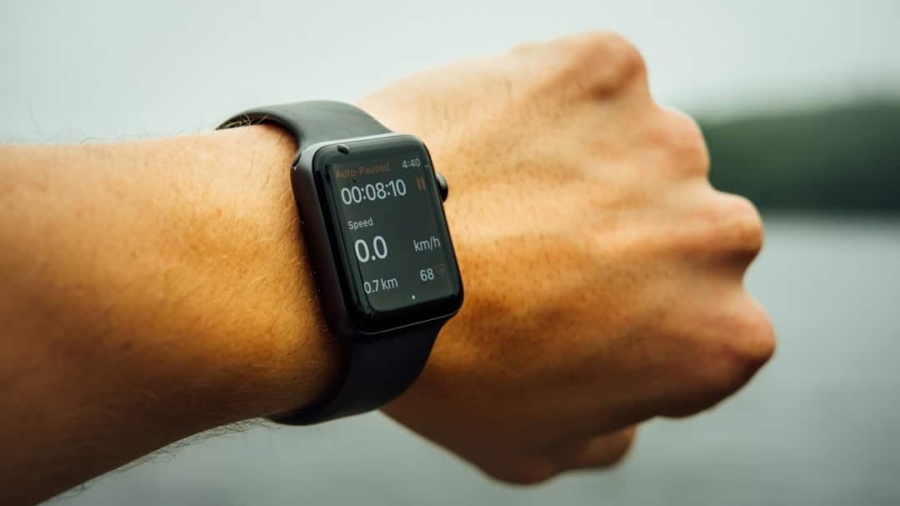The advent of wearable technology has revolutionized the fitness landscape, providing individuals with unprecedented access to data that can enhance their exercise routines and overall health. Wearables, which include devices such as smartwatches, fitness trackers, and heart rate monitors, have become ubiquitous among fitness enthusiasts and casual exercisers alike. These devices not only track physical activity but also monitor various health metrics, enabling users to make informed decisions about their fitness journeys.
The integration of technology into personal health management has transformed how people approach fitness, making it more data-driven and personalized. As the demand for health and fitness solutions continues to rise, the market for wearables has expanded significantly. According to a report by Statista, the global wearables market is projected to reach over $100 billion by 2024.
This growth is fueled by advancements in technology, including improved sensors, enhanced connectivity, and sophisticated algorithms that provide deeper insights into user performance. The ability to collect and analyze data in real-time has made wearables an essential tool for anyone looking to optimize their fitness regimen, whether they are seasoned athletes or beginners embarking on a new health journey.
Key Takeaways
- Wearables in fitness have revolutionized the way people track and optimize their workouts and health.
- Types of wearables for fitness tracking include smartwatches, fitness trackers, and smart clothing.
- Real-time feedback is crucial for optimizing fitness as it allows users to make immediate adjustments to their workouts.
- Wearables provide real-time feedback through sensors that track heart rate, steps, calories burned, and more.
- Real-time feedback from wearables can lead to improved motivation, better performance, and more effective workouts.
Types of Wearables Available for Fitness Tracking
The variety of wearables available for fitness tracking is vast, catering to different preferences and needs. At the forefront are fitness trackers, which are designed primarily to monitor daily activities such as steps taken, calories burned, and sleep patterns. Devices like the Fitbit Charge series exemplify this category, offering users a straightforward interface to track their progress over time.
These trackers often come equipped with features like heart rate monitoring and GPS capabilities, allowing users to gain insights into their cardiovascular health and outdoor activities. Smartwatches have also gained popularity in the fitness domain, combining the functionalities of a traditional watch with advanced health tracking features. Devices such as the Apple Watch and Garmin Forerunner series not only track fitness metrics but also integrate seamlessly with smartphones, providing notifications and apps that enhance the user experience.
Additionally, specialized wearables like smart clothing and biometric sensors are emerging, offering even more precise data collection for serious athletes looking to fine-tune their performance.
The Importance of Real-Time Feedback for Fitness Optimization
Real-time feedback is a critical component of effective fitness training. It allows individuals to make immediate adjustments to their workouts based on their performance metrics, leading to more efficient training sessions. For instance, if a runner receives instant feedback on their heart rate during a run, they can adjust their pace to stay within their target heart rate zone, optimizing fat burning and cardiovascular benefits.
This immediate data empowers users to push themselves appropriately without overexerting or risking injury. Moreover, real-time feedback fosters a greater sense of accountability and motivation. When users can see their progress in real-time—whether it’s tracking the number of steps taken or monitoring calories burned—they are more likely to stay engaged with their fitness goals.
This instant gratification can be particularly beneficial for those who struggle with motivation or consistency in their exercise routines. By providing tangible evidence of progress, wearables can help users maintain focus and commitment to their fitness objectives.
How Wearables Provide Real-Time Feedback
Wearables utilize a combination of sensors and algorithms to deliver real-time feedback on various fitness metrics. Accelerometers and gyroscopes are commonly used to track movement patterns, while heart rate monitors provide insights into cardiovascular performance. These sensors continuously collect data during physical activity, which is then processed by the device’s software to generate actionable insights.
For example, a fitness tracker may analyze the intensity of a workout by measuring changes in heart rate and movement speed, allowing users to understand how hard they are working in real-time. Connectivity features such as Bluetooth enable wearables to sync with smartphones or other devices, enhancing the user experience by providing access to more detailed analytics through companion apps. These apps often display data in user-friendly formats, allowing individuals to visualize their performance trends over time.
Additionally, some wearables incorporate machine learning algorithms that adapt to user behavior, offering personalized recommendations based on past performance and goals. This level of customization ensures that users receive relevant feedback tailored to their unique fitness journeys.
Benefits of Real-Time Feedback for Fitness Optimization
The advantages of real-time feedback extend beyond immediate performance adjustments; they also contribute to long-term fitness optimization. One significant benefit is the ability to set and achieve specific goals more effectively. With real-time data at their fingertips, users can establish measurable targets—such as running a certain distance within a specific time frame—and track their progress toward these goals.
This structured approach not only enhances motivation but also fosters a sense of accomplishment as users witness tangible improvements over time.
For instance, individuals engaging in high-intensity training can monitor their heart rates to ensure they remain within safe limits.
This is particularly crucial for those with pre-existing health conditions or those new to exercise who may be at risk of overexertion. By receiving alerts when they exceed recommended thresholds, users can adjust their intensity levels accordingly, reducing the likelihood of injury or adverse health events.
Challenges and Limitations of Wearables for Fitness Tracking
Despite the numerous benefits associated with wearables in fitness tracking, several challenges and limitations persist. One primary concern is the accuracy of the data collected by these devices. While many wearables have made significant strides in sensor technology, discrepancies can still arise due to factors such as improper placement or environmental conditions.
For example, wrist-based heart rate monitors may struggle with accuracy during high-intensity workouts where wrist movement is pronounced. Users must remain aware of these limitations and consider corroborating wearable data with other sources when making critical health decisions. Another challenge lies in user engagement and adherence to using wearables consistently.
While many individuals may initially be excited about tracking their fitness metrics, maintaining long-term engagement can be difficult. Factors such as battery life, device comfort, and the complexity of app interfaces can influence whether users continue utilizing their wearables regularly. Additionally, some individuals may feel overwhelmed by the volume of data presented or may not fully understand how to interpret it effectively.
This can lead to frustration and disengagement from their fitness goals.
Tips for Using Wearables Effectively for Fitness Optimization
To maximize the benefits of wearables for fitness optimization, users should adopt several best practices. First and foremost, it is essential to set realistic and achievable goals based on individual fitness levels and aspirations. Rather than aiming for drastic changes overnight, users should focus on incremental progress that aligns with their lifestyle and capabilities.
This approach not only enhances motivation but also fosters a sustainable relationship with fitness. Additionally, users should familiarize themselves with the features and functionalities of their devices. Understanding how to navigate companion apps and interpret data can significantly enhance the effectiveness of wearables in tracking progress.
Engaging with online communities or forums dedicated to specific devices can provide valuable insights and tips from fellow users who have successfully integrated wearables into their routines. Regularly reviewing performance metrics can also help users identify patterns and areas for improvement.
The Future of Wearables in Fitness Tracking
The future of wearables in fitness tracking appears promising as technology continues to evolve at an unprecedented pace. Innovations such as advanced biometric sensors capable of measuring hydration levels or blood glucose are on the horizon, offering even deeper insights into personal health management. As artificial intelligence becomes more integrated into wearable technology, users can expect increasingly personalized recommendations based on their unique data profiles.
Moreover, the integration of wearables with other health technologies—such as telehealth services—could further enhance the user experience by providing comprehensive health monitoring solutions. This convergence could allow healthcare professionals to access real-time data from patients’ wearables during consultations, leading to more informed decision-making regarding treatment plans and lifestyle modifications. As society becomes more health-conscious and technology-driven, wearables will likely play an integral role in shaping the future of fitness tracking and personal health management.
The potential for continuous innovation suggests that wearables will not only enhance individual fitness journeys but also contribute significantly to public health initiatives aimed at promoting active lifestyles and preventing chronic diseases.
If you are interested in how technology can enhance various aspects of your life, you may also want to check out this article on the best software for logo design. Just like wearables provide real-time feedback for fitness optimization, this article explores how the right software can help you create professional and eye-catching logos for your business or personal brand. By utilizing the latest tools and technology, you can take your design skills to the next level and stand out in a crowded market.
FAQs
What are wearables?
Wearables are electronic devices that can be worn on the body as accessories or as part of clothing. They are equipped with sensors and software that enable them to collect and transmit data about the wearer’s activities, movements, and vital signs.
How do wearables provide real-time feedback for fitness optimization?
Wearables use sensors to track various fitness metrics such as heart rate, steps taken, distance traveled, and calories burned. This data is then processed and displayed in real-time on the wearable device or transmitted to a smartphone or computer for analysis. Users can use this feedback to adjust their workout intensity, track progress, and make informed decisions about their fitness routines.
What are the benefits of using wearables for fitness optimization?
Wearables provide users with immediate feedback on their fitness activities, allowing them to make adjustments in real-time to optimize their workouts. They also help users set and track fitness goals, monitor their progress, and stay motivated. Additionally, wearables can provide insights into overall health and wellness, helping users make informed decisions about their lifestyle choices.
What types of wearables are commonly used for fitness optimization?
Common types of wearables used for fitness optimization include fitness trackers, smartwatches, and heart rate monitors. These devices are designed to be worn during physical activity and are equipped with sensors to track various fitness metrics. Some wearables also offer additional features such as GPS tracking, workout coaching, and sleep monitoring.
Are wearables accurate in providing fitness feedback?
The accuracy of wearables in providing fitness feedback can vary depending on the quality of the sensors and the device’s design. While most wearables provide reasonably accurate data, it’s important for users to understand that there may be some margin of error in the measurements. It’s also recommended to calibrate and update the device regularly for more accurate readings.



